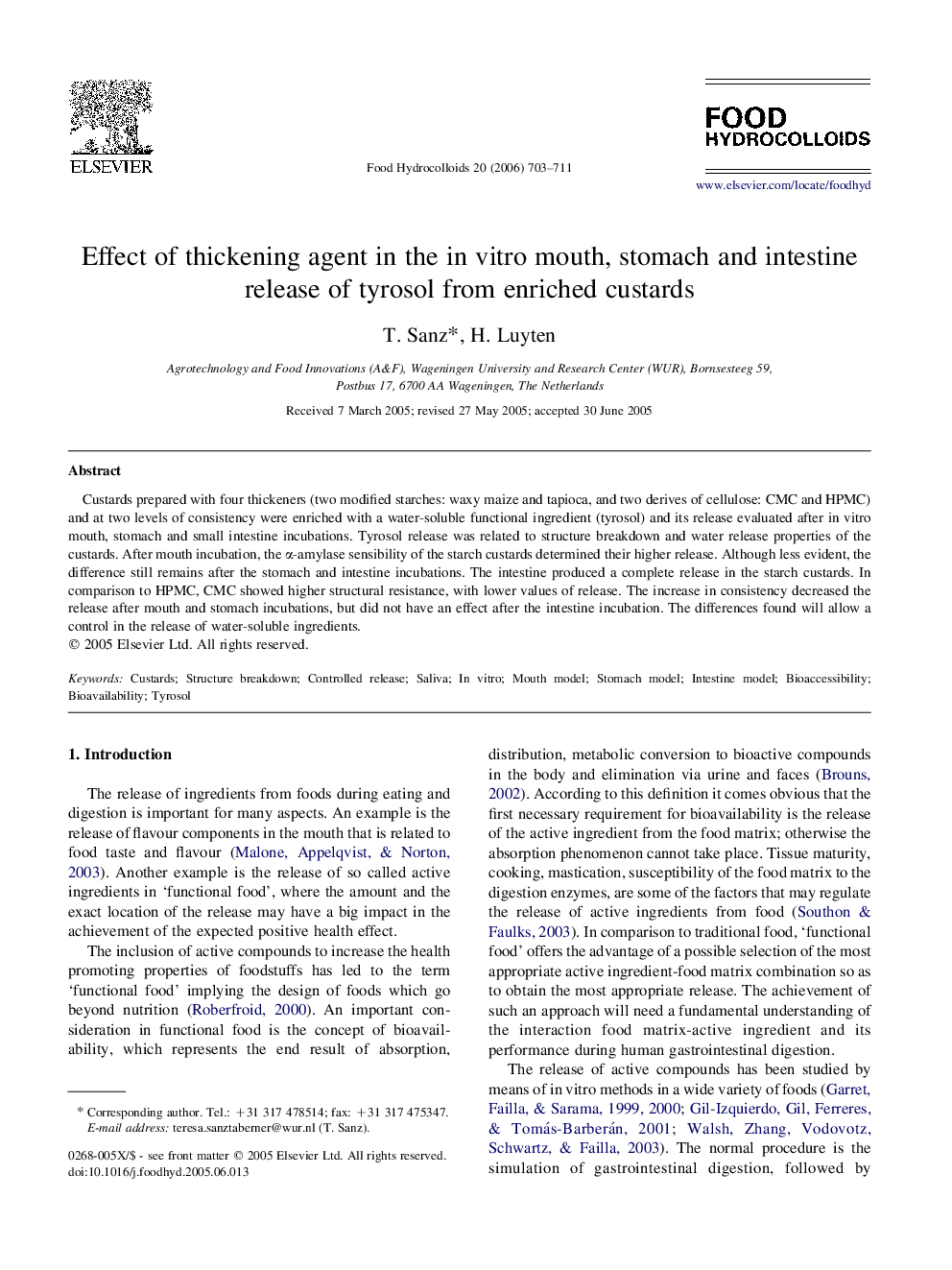| Article ID | Journal | Published Year | Pages | File Type |
|---|---|---|---|---|
| 605716 | Food Hydrocolloids | 2006 | 9 Pages |
Custards prepared with four thickeners (two modified starches: waxy maize and tapioca, and two derives of cellulose: CMC and HPMC) and at two levels of consistency were enriched with a water-soluble functional ingredient (tyrosol) and its release evaluated after in vitro mouth, stomach and small intestine incubations. Tyrosol release was related to structure breakdown and water release properties of the custards. After mouth incubation, the α-amylase sensibility of the starch custards determined their higher release. Although less evident, the difference still remains after the stomach and intestine incubations. The intestine produced a complete release in the starch custards. In comparison to HPMC, CMC showed higher structural resistance, with lower values of release. The increase in consistency decreased the release after mouth and stomach incubations, but did not have an effect after the intestine incubation. The differences found will allow a control in the release of water-soluble ingredients.
